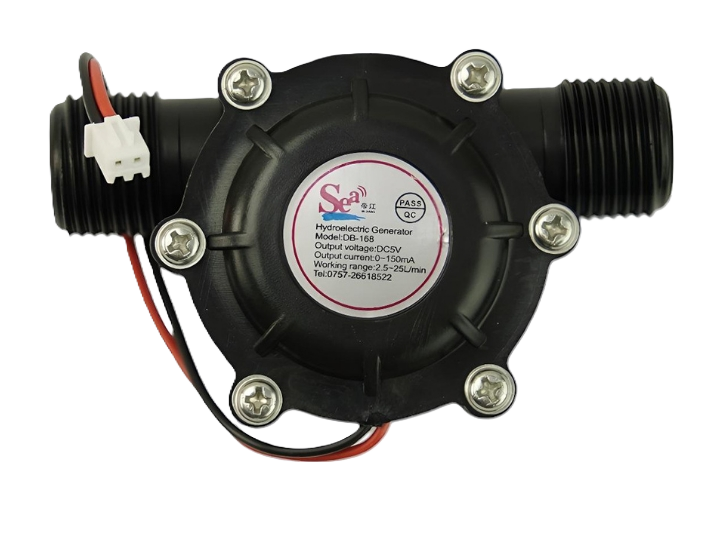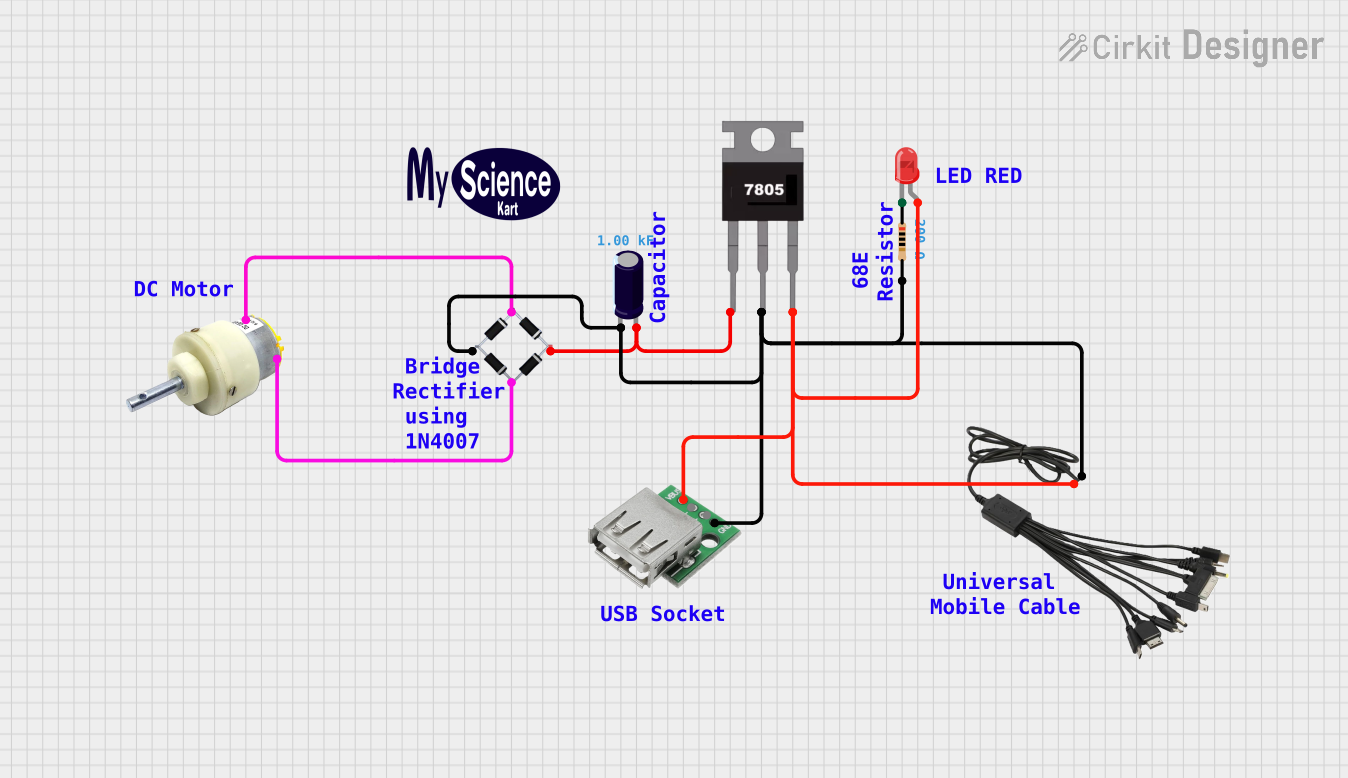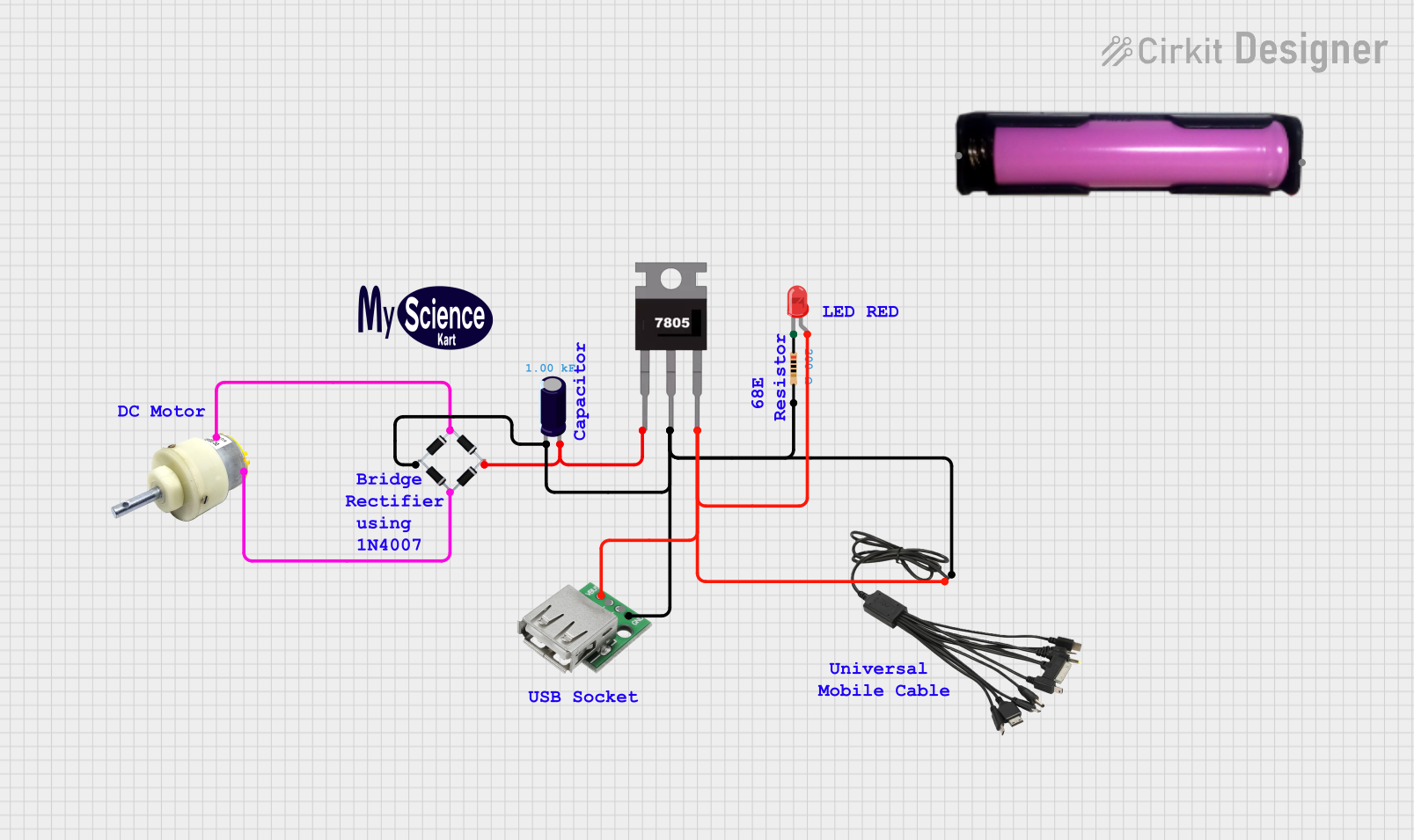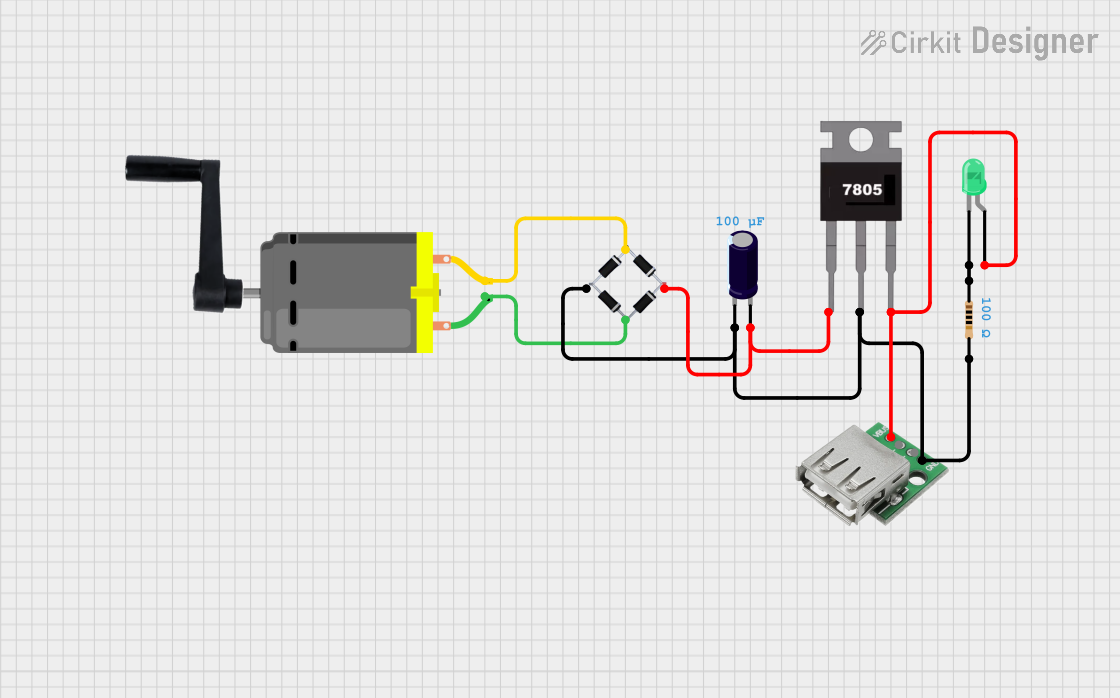
How to Use Water Turbine Generator (5VDC): Examples, Pinouts, and Specs

 Design with Water Turbine Generator (5VDC) in Cirkit Designer
Design with Water Turbine Generator (5VDC) in Cirkit DesignerIntroduction
The Water Turbine Generator (5VDC), manufactured by DFRobot (Part ID: SEN0229), is a compact and efficient device designed to convert the kinetic energy of flowing water into electrical energy. It outputs a stable 5V DC, making it ideal for powering small electronic devices, charging batteries, or serving as a renewable energy source in low-power applications.
Explore Projects Built with Water Turbine Generator (5VDC)

 Open Project in Cirkit Designer
Open Project in Cirkit Designer
 Open Project in Cirkit Designer
Open Project in Cirkit Designer
 Open Project in Cirkit Designer
Open Project in Cirkit Designer
 Open Project in Cirkit Designer
Open Project in Cirkit DesignerExplore Projects Built with Water Turbine Generator (5VDC)

 Open Project in Cirkit Designer
Open Project in Cirkit Designer
 Open Project in Cirkit Designer
Open Project in Cirkit Designer
 Open Project in Cirkit Designer
Open Project in Cirkit Designer
 Open Project in Cirkit Designer
Open Project in Cirkit DesignerCommon Applications and Use Cases
- Renewable energy projects
- Educational demonstrations of energy conversion
- Powering small IoT devices in remote locations
- Charging small batteries or USB-powered devices
- Water flow monitoring systems
Technical Specifications
The following table outlines the key technical details of the Water Turbine Generator (5VDC):
| Parameter | Specification |
|---|---|
| Manufacturer | DFRobot |
| Part ID | SEN0229 |
| Output Voltage | 5V DC |
| Output Current | 0–100mA (depending on water flow) |
| Operating Water Flow | 1.5–30 L/min |
| Maximum Water Pressure | 1.2 MPa |
| Connector Type | 3-pin JST |
| Dimensions | 49mm x 25mm x 26mm |
| Weight | 30g |
Pin Configuration and Descriptions
The Water Turbine Generator has a 3-pin JST connector. The pinout is as follows:
| Pin | Name | Description |
|---|---|---|
| 1 | VCC | Positive output voltage (5V DC) |
| 2 | GND | Ground connection |
| 3 | Signal | Pulse signal output proportional to water flow rate |
Usage Instructions
How to Use the Component in a Circuit
Connect the Output Pins:
- Connect the VCC pin to the positive input of your circuit or device.
- Connect the GND pin to the ground of your circuit.
- If you need to measure the water flow rate, connect the Signal pin to a microcontroller (e.g., Arduino UNO) or a frequency counter.
Ensure Proper Water Flow:
- Install the turbine in a water pipe or system with a flow rate between 1.5 and 30 L/min.
- Ensure the water pressure does not exceed 1.2 MPa to avoid damaging the turbine.
Stabilize the Output:
- If powering sensitive electronics, consider adding a capacitor (e.g., 100µF) across the VCC and GND pins to smooth out any voltage fluctuations.
Optional Flow Rate Measurement:
- The Signal pin outputs a pulse signal proportional to the water flow rate. Use a microcontroller to read and process this signal.
Important Considerations and Best Practices
- Water Quality: Use clean water to prevent debris from clogging or damaging the turbine.
- Orientation: Install the turbine in the correct orientation as indicated by the flow direction arrow on the housing.
- Safety: Avoid exceeding the maximum water pressure (1.2 MPa) to prevent leaks or damage.
- Load Matching: Ensure the connected load does not draw more current than the generator can provide (maximum 100mA).
Example: Connecting to an Arduino UNO
To measure the water flow rate using the Signal pin, connect the turbine to an Arduino UNO as follows:
- VCC to Arduino 5V
- GND to Arduino GND
- Signal to Arduino digital pin 2
Here is an example Arduino sketch to calculate and display the water flow rate:
// Water Turbine Generator Flow Rate Measurement
// Manufacturer: DFRobot (Part ID: SEN0229)
// Pin configuration
const int signalPin = 2; // Signal pin connected to digital pin 2
volatile int pulseCount = 0; // Variable to store pulse count
// Constants for flow rate calculation
const float calibrationFactor = 4.5; // Pulses per liter (adjust as needed)
void setup() {
pinMode(signalPin, INPUT_PULLUP); // Set signal pin as input with pull-up
attachInterrupt(digitalPinToInterrupt(signalPin), countPulse, RISING);
Serial.begin(9600); // Initialize serial communication
}
void loop() {
static unsigned long lastTime = 0;
unsigned long currentTime = millis();
float flowRate;
// Calculate flow rate every second
if (currentTime - lastTime >= 1000) {
noInterrupts(); // Disable interrupts to read pulseCount safely
flowRate = (pulseCount / calibrationFactor); // Flow rate in L/min
pulseCount = 0; // Reset pulse count
interrupts(); // Re-enable interrupts
// Print flow rate to serial monitor
Serial.print("Flow Rate: ");
Serial.print(flowRate);
Serial.println(" L/min");
lastTime = currentTime;
}
}
// Interrupt service routine to count pulses
void countPulse() {
pulseCount++;
}
Notes:
- Adjust the
calibrationFactorbased on the specific characteristics of your turbine. - Use a pull-up resistor if the signal pin does not have an internal pull-up.
Troubleshooting and FAQs
Common Issues and Solutions
No Output Voltage:
- Ensure the water flow rate is above the minimum threshold (1.5 L/min).
- Check the connections to the VCC and GND pins.
Unstable Voltage Output:
- Add a capacitor (e.g., 100µF) across the VCC and GND pins to stabilize the output.
- Verify that the water flow is steady and free of turbulence.
Signal Pin Not Working:
- Ensure the signal pin is properly connected to the microcontroller.
- Check for loose or damaged wires.
- Verify that the water flow is within the operating range.
Low Current Output:
- Confirm that the connected load does not exceed the generator's maximum current rating (100mA).
- Increase the water flow rate if possible.
FAQs
Q: Can this turbine be used with saltwater?
A: No, the turbine is designed for use with clean, freshwater. Saltwater may corrode the internal components.
Q: What happens if the water flow exceeds 30 L/min?
A: Excessive flow may damage the turbine or produce unstable output. Use a flow regulator to maintain the recommended range.
Q: Can I use this turbine to charge a smartphone?
A: Yes, but you may need a voltage regulator or USB charging module to ensure compatibility with your device.
Q: How do I clean the turbine?
A: Disconnect the turbine and flush it with clean water to remove debris. Avoid using harsh chemicals.
This concludes the documentation for the Water Turbine Generator (5VDC). For further assistance, refer to the DFRobot support resources.